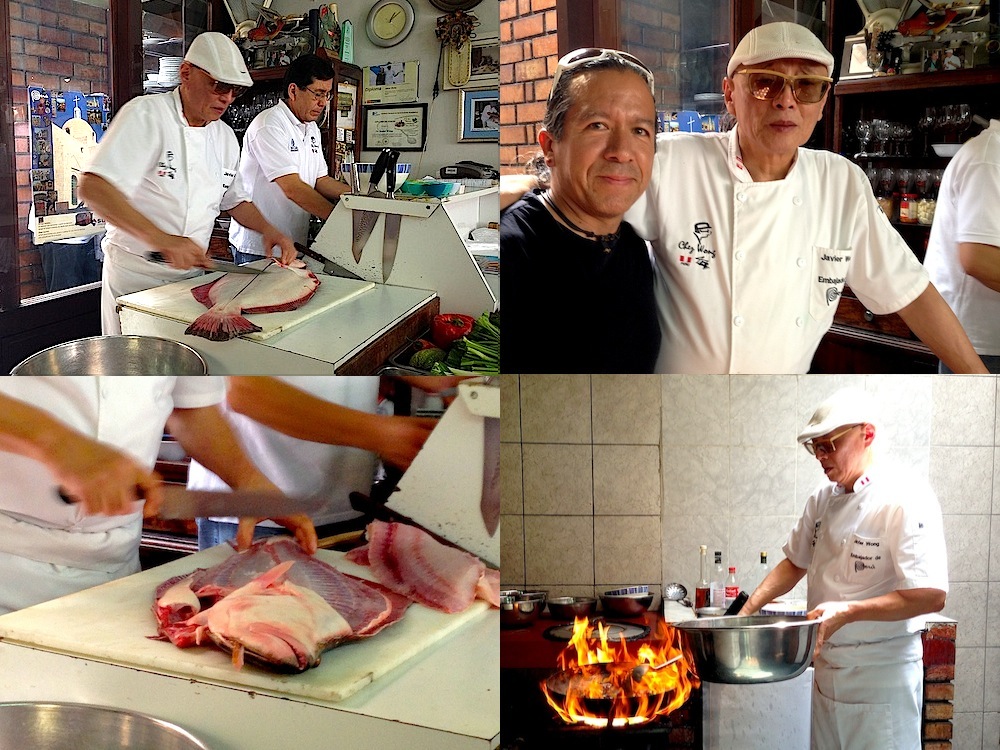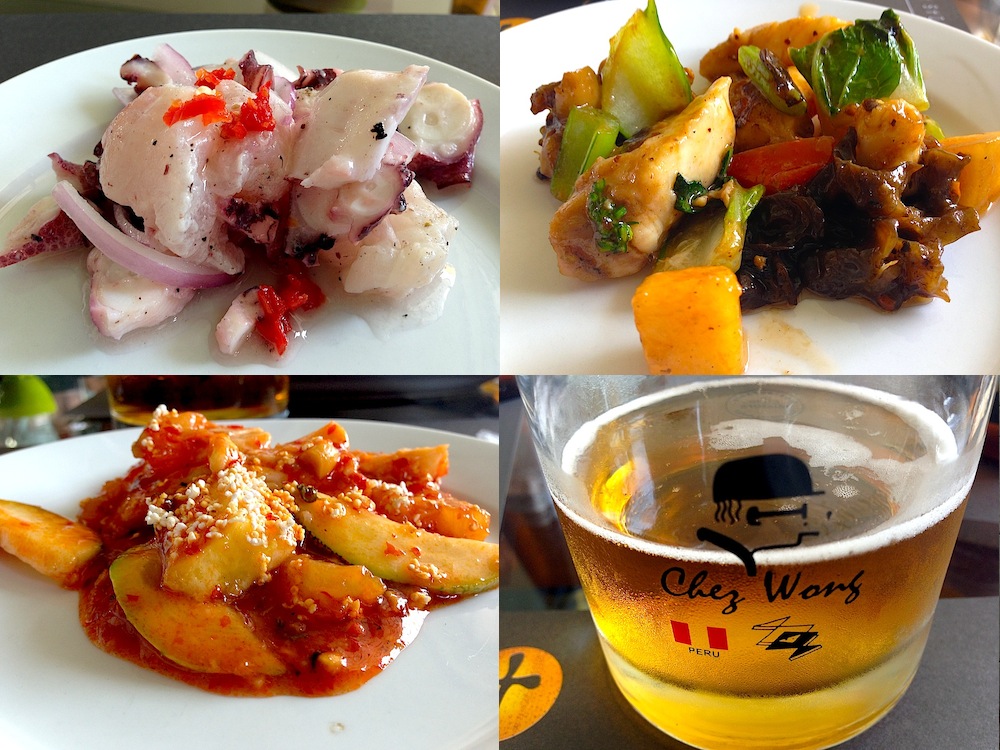Lima is famous for its huariques, secret hideaway restaurants with no signs on the door, often in a barrio where you would least expect to find good food. Somehow you heard about one, maybe a friend had eaten there, they’ve managed to make a reservation, but you drive past it several times because it’s a nondescript house in the residential neighborhood of Santa Catalina that is overcrowded with auto-repair shops. This is a place you would never find by chance, and if you are fortunate enough to have lunch here, this is a meal you will never forget. This is Chez Wong’s secret ceviche hideaway.
With a small open kitchen in the back, and only a handful of tables, Chez Wong feels like you are in someone’s home, as a guest in their dining room. The wall near the front door is covered with photographs, plaques, awards, magazine covers, and I recognize a picture of Anthony Bourdain, who visited here in one of his globetrotting culinary adventures. Like most huariques, there is no menu, the chef will make lunch using ingredients he procured that morning. All they ask is how many orders you want. The rest is up to Javier Wong, the Chinese-Peruvian chef who arguably makes the best ceviche in Peru.
Lunch will be three courses, and he begins by placing a whole fish on the counter to prep the ceviche mixto. That is the cue to stand from your table and move towards the kitchen, as if approaching a stage in hopes of gleaning the secrets of the magician who is performing, effortlessly cleaning and cutting the fish. What is his secret? Fresh ingredients. Yes, fresh ingredients truly make all the difference. Fish, salt, onions, hot peppers, and lime juice. Five ingredients is all you need to make a good ceviche. A simple but magical combination.
Minutes after mixing all the ingredients in a bowl, a plate of ceviche is at your table. One bite. Just. One. Bite. And you realize what a difference fresh ingredients make and that no ceviche anywhere in the world tastes like it does in Peru. The chef then begins to cook the next dish, a savory stir fry, using a wok over an open flame in a room that has the most natural kitchen hood of them all, no roof. And when you are done with that dish, he makes a sweet and sour stir fry. It’s a little spicy, so you wash it down with a cold beer and you smile.
You smile filled with pride at having tasted Peru’s national dish like never before. So you walk up to the chef to thank him personally, tell him you come from California, and share that you cook Peruvian pop-ups in San Francisco, and that here, now, this was truly the best ceviche you’ve ever had. You leave, and can’t help but think that all ceviche recipes ever written are wrong. Or rather, they omit the most important part. They should begin with:
catch a fish from the Pacific ocean in the morning,
clean and cut the fish just before serving lunch.
Otherwise, it’s not fresh, and it’s not ceviche.

